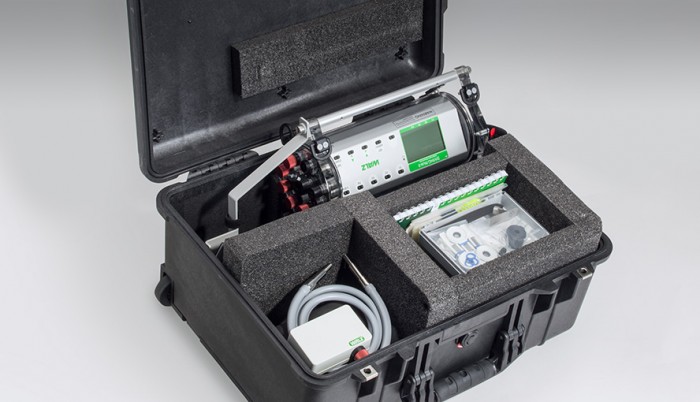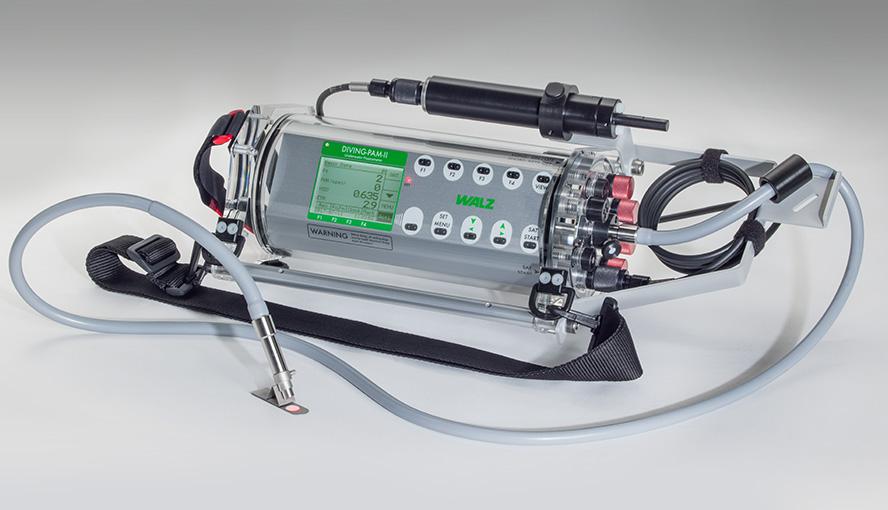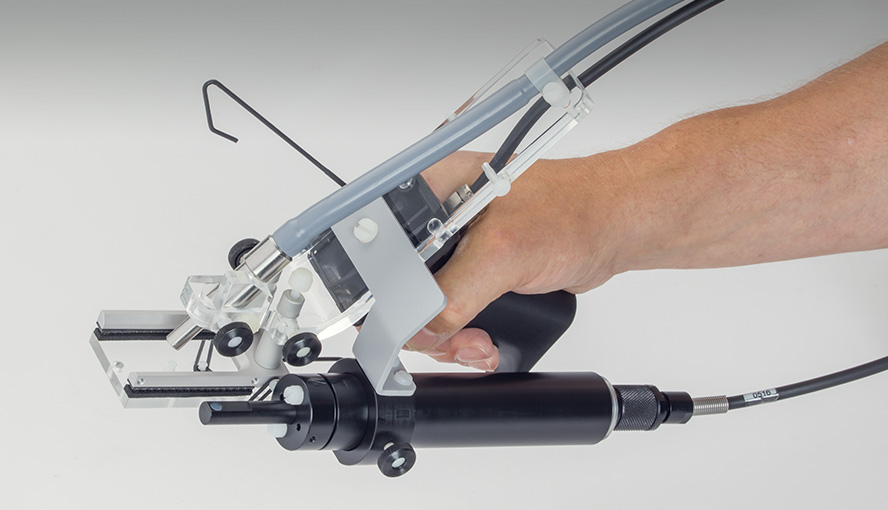We are excited to announce the acquisition of a new Pulse Amplitude Modulation Unit, Diving PAM II, available for all registered users!
There will be a demonstration of the equipment on Tuesday, 30 October 2018 at 2.30pm.
The Diving PAM II is an underwater chlorophyll fluorometer, designed for the examination of photosynthesis in water up to 50m. It measures chlorophyll A fluorescence in photosystem II underwater plants such as sea grasses, macroalgae, and zooxanthellae in corals.

Capabilities:
- Maximum diving depth: 50 m
- Operating temperature: -5 to +45 °C
- Measuring light: Red (655 nm) LED, modulation frequencies and PAR. Fluorescence at wavelengths greater than 700 nm is measured.
- Actinic light: Same red LED as for measuring light, maximum actinic PAR = 3000 μmol m-2 s-1, maximum PAR of saturation pulses = 6000 μmol m-2 s-1 adjustable at increments of 500 μmol m-2 s-1
- Data storage: Flash memory, 8 MB, providing memory for more than 27,000 saturation pulse analyses
- Battery: Lithium manganese oxide battery 7.4 V / 5.6 Ah (41.5 Wh) providing power for more than 2000 yield measurements


Accessories:
- Universal Sample Holder (DIVING-II-USH):
- Underwater Cable DIVING-II/K25
- Surface Holder DIVING-SH
Applications:
- Environmental measurements
- Assessing photosynthesis rates
For more information, please contact Mr Sebastian Yeo at tmsyjhs@nus.edu.sg.
Abstract:
Both the value and plight of corals reefs are well established. During the past five decades, researchers have identified the key problems affecting reefs, including sedimentation, pollution, overfishing and climate change. We have also documented extensive losses, with an estimated 50% of reefs having been severely impacted during this period, as a result of human activities. Some reefs are thriving and have demonstrated the capacity for recovery from both local and global level stressors. Others have passed a tipping point and reached an alternate stable state, dominated by algae, and are unlikely to recover without interventions. With the frequency and magnitude of mass coral bleaching events increasing since the 1980’s, both ecological models and observational projections predict further losses and a future with coral reefs of lower biodiversity, structural complexity and ecosystem services. Interventions are under consideration, including active restoration, selective breeding for resistant genotypes, ecosystem engineering and genetic manipulation. The most recent assessments of coral reef status and trends indicate inaction is the path of greatest risk. New tools in biology such as genomics, proteomics, metabolomics and transcriptomics provide answers on how corals respond to stressors at levels from ecosystems to molecules and provide metrics to evaluate the effectiveness of management practices over periods of weeks to months rather than years to decades. New approaches to valuing reefs and their ecosystem services support the will needed at the policy level. As researchers, we need to clearly communicate our science to energize efforts to better bridge the best knowledge to developing and implementing sound policies and actions if leaving a legacy of vital reefs for future generations is to be achieved.


